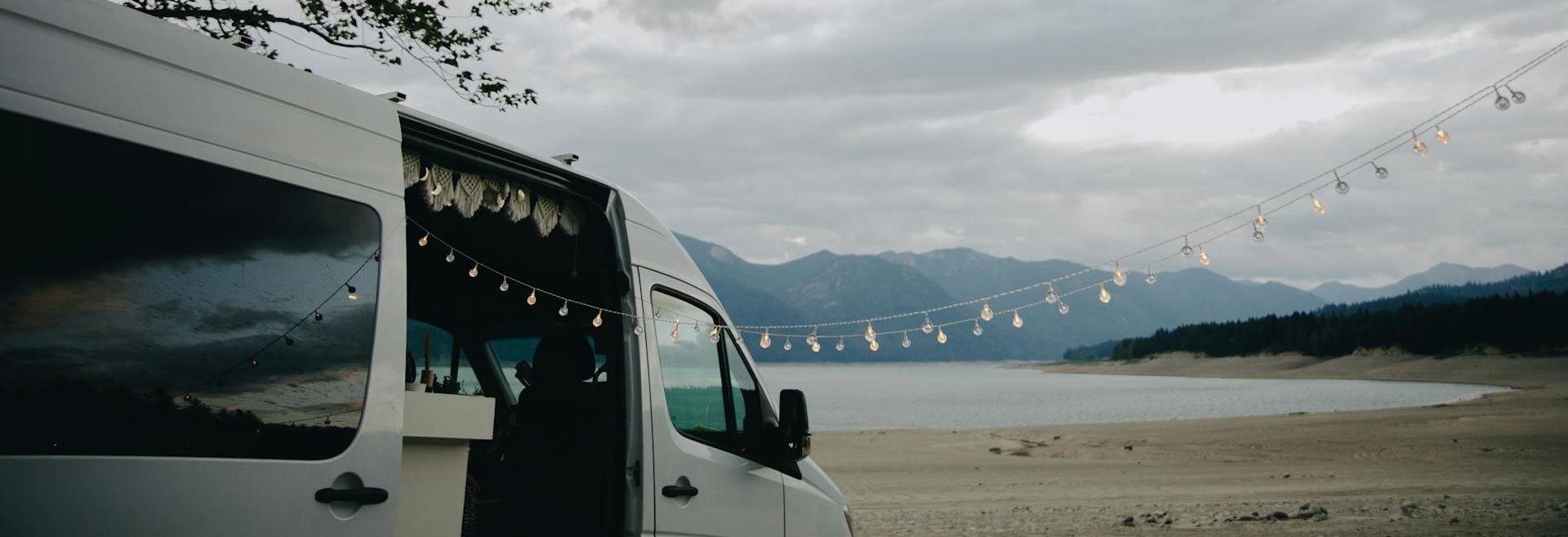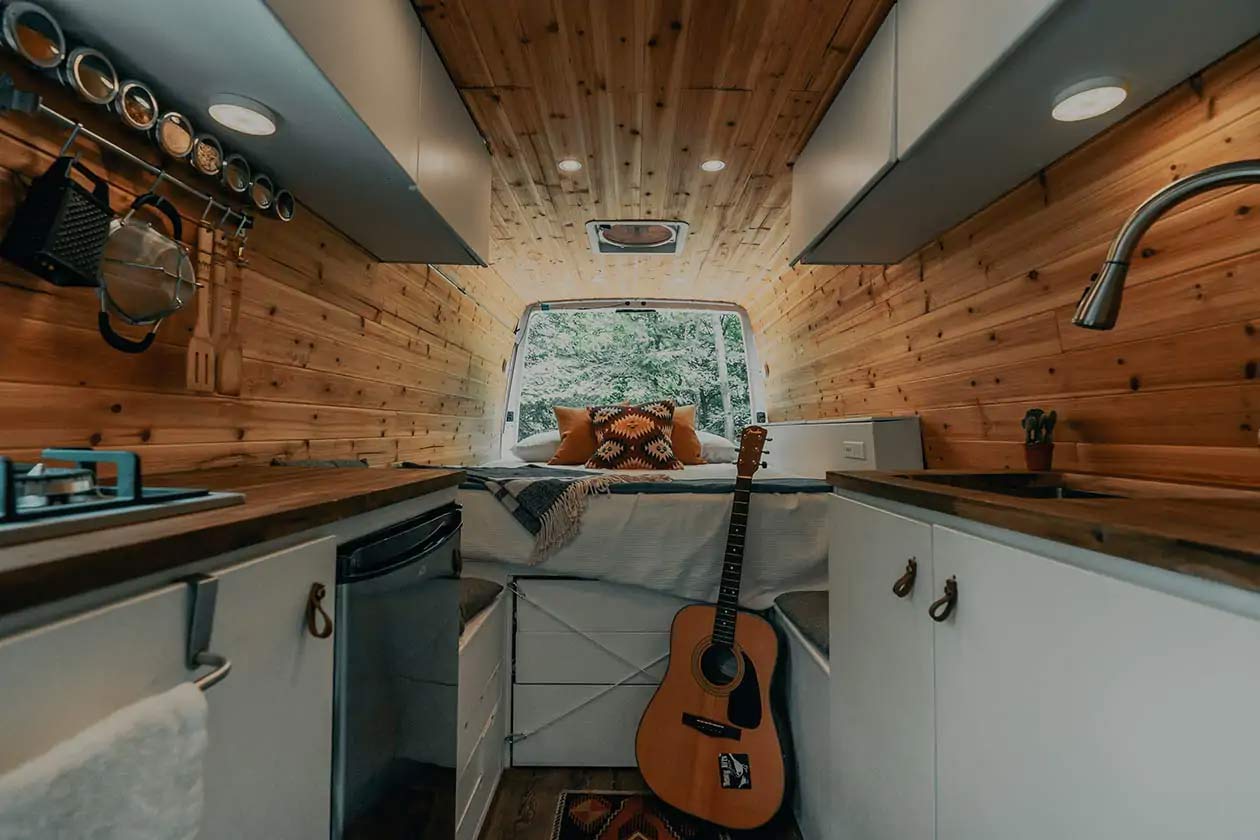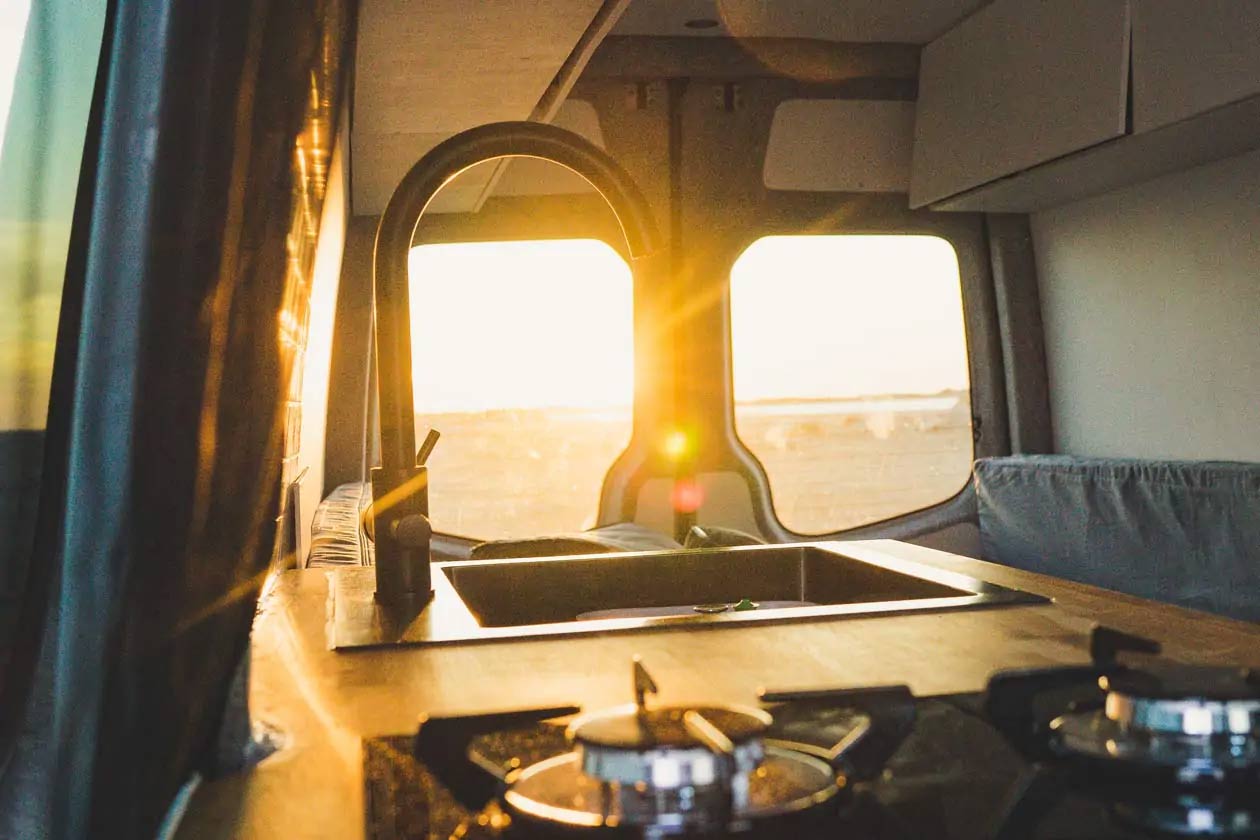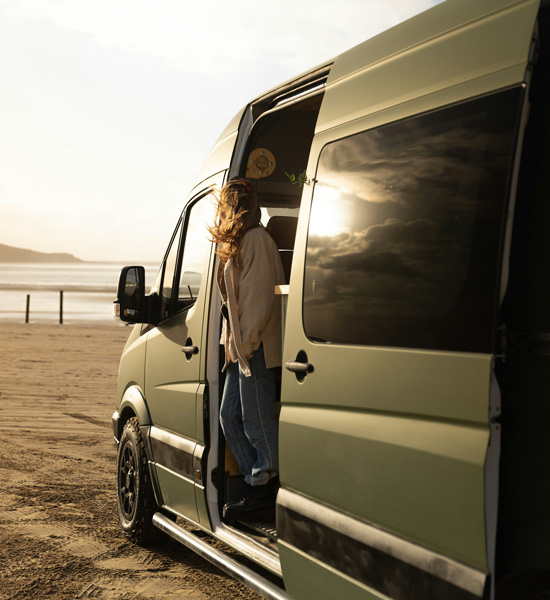We’ve put together this helpful guide to understanding the electrical systems in converted campervans, including what impact they can have on your camper’s insurance.
Converting a campervan into a cosy, functional home on wheels is an exciting and rewarding project, especially when you can completely customise it to your exact needs and wants.
One of the most crucial parts of this transformation from van to campervan is the electrical system. You’ll need to think about the size of the leisure battery you’ll need, where you’ll place it, how you’ll get power to your leisure battery, where you’ll locate your power outlets, and more.
Luckily, we’ve been offering specialist insurance for campervan owners since 1998, so we’ve got plenty of experience which we’re always happy to share. Many of our team memebers are also proud campervan owners, so we know just how important it is to keep your pride and joy protected.
Whether you’re converting a Mercedes-Benz Sprinter, a Ford Transit, or a Volkswagen Transporter, this guide will provide you with the information you need to tackle campervan electrics confidently.

Why Do Campervan Electrics Matter?
An effective electrical system is really important to many of us who’ve converted our own campervans. Whether you just want to power a fridge and a light, or you’re looking to go on a massive van life adventure and want outlets for laptops, kettles, and TVs, you’ll want a reliable electrical set-up.
Planning Your Campervan Electrical System
Here are a few of the steps you’ll need to take when planning out your campervan’s electrical system, to make sure it does what you want it to do. You’ll also save yourself a lot of time and hassle by investing some time in planning out your electrical circuits before you start, rather than making things up as you go!
How Do You Assess Your Power Needs?
The first step in planning your converted campervan’s electrical system is to work out how much power you’ll actually need. Consider the appliances and devices you’ll be using regularly, and make a list of everything that requires power. This including lights, fridges, water pumps, heaters, fans, and chargers for your electronic devices.
How Do You Calculate Power Consumption?
Now you’re armed with your list of items which will be drawing power from your camper, you’ll need to work out the power consumption of each item. This is typically measured in watts (W) or amp-hours (Ah). Most appliances will have a label indicating their power usage, and the information is also likely available online.
Add up the total wattage or amp-hours to get an idea of your daily power consumption.

Choosing a Power Source
Now that you know how much power you’ll need to keep everything in your campervan running, it’s time to take a look at the different options available to you for getting power to your system.
There are a few different options available, including:
Leisure Batteries: These are the backbone of most campervan electrical systems, and you’ll almost certainly need to include one in your converted camper. They store power and provide a steady supply of electricity for your appliances, and are available in a range of different sizes, depending on the amount of power your devices and appliances are going to need.
Solar Panels: Solar panels are a popular choice for generating renewable energy on the road, whether you’re driving or parked up. They can keep your batteries charged, especially during sunny days, but modern solar panels are also very effective during overcast days or in winter, although obviously to a lesser extent.
Alternator: The van’s alternator can charge the leisure batteries while the engine is running, but you likely won’t be generating enough to make a huge difference unless you’re driving a long way each day.
Normally your van’s alternator would recharge your main vehicle battery (the one which runs the lights, ignition, etc.), but you can wire up your camper so that power from your alternator will flow to your leisure battery once your main vehicle battery is fully charged, to help keep both topped up.
Shore Power: Also referred to as mains power, this is often available at campsites (for an additional price when booking) and is a great way to power all of your appliances and devices, as well as recharge your leisure battery.
Many people will opt for all four of these options, especially if they’ve got a larger campervan like a VW Crafter or Mercedes Vito with plenty of roof space for solar panels and internal space for power-hungry appliances!
Selecting the Right Components
Based on your power needs and chosen power sources, you’ll need to select the appropriate components for your system. Key components include:
Leisure Batteries: Choose deep-cycle batteries designed for continuous use, and make sure that the battery can hold enough power to run all of your devices and appliances for a few days. This is especially important if you’ll be camping away from sources of shore power.
Solar Panels and Controllers: There’s a great selection of solar panels available for your campervan, so make sure you take the time to find the right type of panel at the correct size for your vehicle’s roof. Some will be rigid, while others are flexible, so you’ll want to check that too depending on whether you’ve got a flat or curved roof. Our sister company Just Kampers has a wide variety to choose from – browse the range here!
Inverter: These handy units can be wired into your electrical circuit, and will convert DC power from your batteries to the AC power which household appliances need to run.
Fuse Box and Wiring: It’s really important to use the correct wiring, and the right fuses, to protect your system from overloads and short circuits.

How To Install Your Campervan Electrical System
We’ve converted a few campers ourselves, and our colleagues over at Just Kampers have filmed some great how-to videos to guide you through the process, too, but here’s a quick overview on the steps you’ll need to take when installing the electrical system into your converted campervan.
Safety First
As always, we recommend that if you’re not confident in doing it yourself, or you lack the skills, tools, and experience to install your electrical system yourself, that you get help from a certified expert.
Electrical safety isn’t anything to take lightly, and you’ll want to make sure it’s all been installed correctly and safely.
Wiring Diagram
Creating a wiring diagram is a crucial first step in the installation process. This diagram will map out how all components are connected, to help make sure you’ve got a logical and efficient layout. Include all major components, such as batteries, fuse box, inverter, and outlets for appliances.
Battery Installation
Start by installing your leisure batteries in a secure and ventilated location. Many people opt to fit their leisure battery under the passenger seat, especially if they’re fitting a swivel seat base there as well.
Make sure you’re using heavy-duty cables and the appropriate connectors to ensure a solid and safe connection.
Solar Panel Installation
The next step is to mount the solar panels on the roof of your campervan. You’ll likely need to drill a hole in the roof of your camper at this point, to feed the cables from your solar panel to the interior of your vehicle so it can be connected up.
Use the correct mounting brackets for your solar panel, and use sealant to secure them in place. You should also use sealant around the terminal box which covers up the cable-hole you’ve just cut into your roof, to prevent water or anything else from getting into your camper.
With this done, connect the panels to the charge controller, which regulates the power going to your batteries, preventing overcharging.
Wiring and Fuse Box
Securely install your fuse box, and then run the wiring to it from your leisure battery.
This box will distribute power to your appliances and protect your system from overloads, so use correctly rated fuses for each appliance and ensure all connections are secure.
Inverter Installation
If you need AC power for household appliances, you’ll have to install an inverter. Connect the inverter to your batteries once it’s fitted, and run the AC wiring to your appliances.
Make sure the inverter is properly ventilated and has a sufficient power rating for your needs.
How Do You Maintain Your Campervan Electrical System?
With your converted camper’s new electrical system installed and tested, it’s now time to enter the maintenance phase and keep it all running smoothly!
Regularly inspect your electrical system for any signs of wear or damage. Check connections, wiring, and components to ensure everything is secure and functioning correctly.
Maintain your batteries by keeping them clean and ensuring they’re properly charged. Avoid deep discharging and overcharging, as these can shorten battery life.
Keep your solar panels clean and free of debris to ensure optimal performance. Regularly check the connections and mounting brackets for any signs of wear or damage.
Common issues in campervan electrical systems include blown fuses, poor connections, and battery problems. Keep a set of spare fuses and basic tools on hand for troubleshooting and repairs. If you encounter more complex issues, consult a professional.

Conclusion
Understanding and installing a campervan electrical system is a critical part of any self-build or DIY campervan project. With the right knowledge and careful planning, you can create a reliable and efficient system that meets all your needs on the road.
For those embarking on this journey, it’s also essential to consider campervan insurance. Having the right coverage protects your investment and ensures peace of mind while exploring new horizons.
To learn more about campervan insurance and explore coverage options tailored to your needs, visit Just Kampers Insurance. Enjoy your travels, and stay powered up with confidence!
Get 10% Off Parts & Accessories for Your Camper!
When you insure your vehicle with Just Kampers Insurance, you get 10% off your orders at our sister company, Just Kampers!
They have a comprehensive range of parts and accessories for all kinds of campervans, so you can get the most out of your cosy home on wheels. Shop the full range of campervan conversion parts here!
So, give us a call on 01256 444 546 and let one of our specialist team discuss your requirements. Or Get an online quote today or arrange a call back and let us call you at a convenient time.
